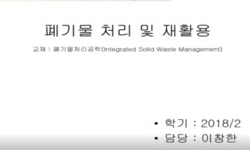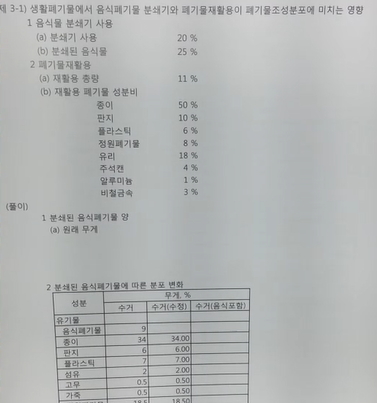Destablization and demulsification is a difficult task for the treatment of waste oil-in-water drilling fluid because of its “three-high” characteristics: emulsification, stabilization and oiliness. At present, China is short for effective treatin...
http://chineseinput.net/에서 pinyin(병음)방식으로 중국어를 변환할 수 있습니다.
변환된 중국어를 복사하여 사용하시면 됩니다.
- 中文 을 입력하시려면 zhongwen을 입력하시고 space를누르시면됩니다.
- 北京 을 입력하시려면 beijing을 입력하시고 space를 누르시면 됩니다.
https://www.riss.kr/link?id=A103460191
-
저자
Chao Tang (Yangtze University) ; Shui Xiang Xie (CNPC Research Institute of Safety & Environment Technology)

- 발행기관
- 학술지명
- 권호사항
-
발행연도
2017
-
작성언어
English
- 주제어
-
등재정보
KCI등재,SCOPUS,SCIE
-
자료형태
학술저널
-
수록면
277-280(4쪽)
-
KCI 피인용횟수
0
- 제공처
- 소장기관
-
0
상세조회 -
0
다운로드
부가정보
다국어 초록 (Multilingual Abstract)
Destablization and demulsification is a difficult task for the treatment of waste oil-in-water drilling fluid because of its “three-high” characteristics: emulsification, stabilization and oiliness. At present, China is short for effective treating technology, which restricts cleaner production in oilfield. This paper focused on technical difficulties of waste oil-in-water drilling fluid treatment in JiDong oilfield of China, adopting physical-chemical collaboration demulsification technology to deal with waste oil-in-water drilling fluid. After oil-water-solid three-phase separation, the oil recovery rate is up to 90% and the recycled oil can be reused for preparation of new drilling fluid. Meanwhile, harmless treatment of wastewater and sludge from waste oil-in-water drilling fluid after oil recycling was studied. The results showed that wastewater after treated was clean, contents of chemical oxygen demand and oil decreased from 993 mg/L and 21,800 mg/L to 89 mg/L and 3.6 mg/L respectively, which can meet the requirements of grade one of “The National Integrated Wastewater Discharge Standard” (GB8978); The pollutants in the sludge after harmless treatment are decreased below the national standard, which achieved the goal of resource recovery and harmless treatment on waste oil-in-water drilling fluid.
목차 (Table of Contents)
- ABSTRACT
- 1. Introduction
- 2. Materials and Equipments
- 3. Methods
- 4. Results and Discussion
- ABSTRACT
- 1. Introduction
- 2. Materials and Equipments
- 3. Methods
- 4. Results and Discussion
- 5. Conclusions
- References
참고문헌 (Reference)
1 Xie SX, "Using chemical strengthening separation-harmless technology for the treatment of waste oil-based drilling fluid" 5 : 425-430, 2011
2 Robinson JP, "Thermal desorption and pyrolysis of oil contaminated drill cuttings by microwave heating" 81 : 27-32, 2008
3 Zhou JL, "Soild-liquid separation technology of waste drilling fluid in offshore oilfields" 34 : 148-151, 2012
4 Dias FTG, "Influence of modified starches composition on their performance as fluid loss additives in invert-emulsion drilling fluids" 140 : 711-716, 2014
5 Liu YC, "Experiment on thermo-chemical demulsification and centrifugal separation of abandoned oil-based drilling fluid" 7 : 2333-2337, 2013
6 Davies JM, "Environmental effects of the use of oil-based drilling muds in the North Sea" 15 : 363-370, 1984
7 Ren YJ, "Cleanup characteristics and mechanisms of reversible invert emulsion drilling fluid" 133 : 296-303, 2015
8 Ayotamuno MJ, "Chromium removal from flocculation effluent of liquid-phase oil-based drill-cuttings using powdered activated carbon" 84 : 1002-1011, 2007
9 Han LS, "Application of oil-in-water fluid in fifth interval of well NP23-P2002" 28 : 36-39, 2011
10 Huo BY, "Application of high-density oil-in-water drilling fluid in deep horizontal wells of Chuanxi" 30 : 45-48, 2013
1 Xie SX, "Using chemical strengthening separation-harmless technology for the treatment of waste oil-based drilling fluid" 5 : 425-430, 2011
2 Robinson JP, "Thermal desorption and pyrolysis of oil contaminated drill cuttings by microwave heating" 81 : 27-32, 2008
3 Zhou JL, "Soild-liquid separation technology of waste drilling fluid in offshore oilfields" 34 : 148-151, 2012
4 Dias FTG, "Influence of modified starches composition on their performance as fluid loss additives in invert-emulsion drilling fluids" 140 : 711-716, 2014
5 Liu YC, "Experiment on thermo-chemical demulsification and centrifugal separation of abandoned oil-based drilling fluid" 7 : 2333-2337, 2013
6 Davies JM, "Environmental effects of the use of oil-based drilling muds in the North Sea" 15 : 363-370, 1984
7 Ren YJ, "Cleanup characteristics and mechanisms of reversible invert emulsion drilling fluid" 133 : 296-303, 2015
8 Ayotamuno MJ, "Chromium removal from flocculation effluent of liquid-phase oil-based drill-cuttings using powdered activated carbon" 84 : 1002-1011, 2007
9 Han LS, "Application of oil-in-water fluid in fifth interval of well NP23-P2002" 28 : 36-39, 2011
10 Huo BY, "Application of high-density oil-in-water drilling fluid in deep horizontal wells of Chuanxi" 30 : 45-48, 2013
11 Wang W, "Application of high temperature resistant diesel in water drilling fluid in NP36-P3002 well" 40 : 99-103, 2015
12 Dina K, "A review of biolubricants in drilling fluids: Recent research, performance, and applications" 135 : 177-184, 2015
13 Li JC, "A new type of whole oil-based drilling fluid" 41 : 538-544, 2014
동일학술지(권/호) 다른 논문
-
Flocculation properties of a natural polyampholyte
- 대한환경공학회
- Mohammad Nazarzadeh
- 2017
- KCI등재,SCOPUS,SCIE
-
Life cycle impact assessment of the environmental infrastructures in operation phase
- 대한환경공학회
- Hyeong-Woo Kim
- 2017
- KCI등재,SCOPUS,SCIE
-
- 대한환경공학회
- Zhonglin Chen
- 2017
- KCI등재,SCOPUS,SCIE
-
- 대한환경공학회
- Yundong Wu
- 2017
- KCI등재,SCOPUS,SCIE
분석정보
인용정보 인용지수 설명보기
학술지 이력
| 연월일 | 이력구분 | 이력상세 | 등재구분 |
|---|---|---|---|
| 2023 | 평가예정 | 해외DB학술지평가 신청대상 (해외등재 학술지 평가) | |
| 2020-01-01 | 평가 | 등재학술지 유지 (해외등재 학술지 평가) |  |
| 2010-01-01 | 평가 | 등재학술지 유지 (등재유지) |  |
| 2008-01-01 | 평가 | 등재학술지 유지 (등재유지) |  |
| 2005-01-01 | 평가 | 등재학술지 선정 (등재후보2차) |  |
| 2004-01-01 | 평가 | 등재후보 1차 PASS (등재후보1차) |  |
| 2003-01-01 | 평가 | 등재후보학술지 선정 (신규평가) |  |
학술지 인용정보
| 기준연도 | WOS-KCI 통합IF(2년) | KCIF(2년) | KCIF(3년) |
|---|---|---|---|
| 2016 | 0.23 | 0.23 | 0.21 |
| KCIF(4년) | KCIF(5년) | 중심성지수(3년) | 즉시성지수 |
| 0.2 | 0.17 | 0.396 | 0 |






 ScienceON
ScienceON DBpia
DBpia




